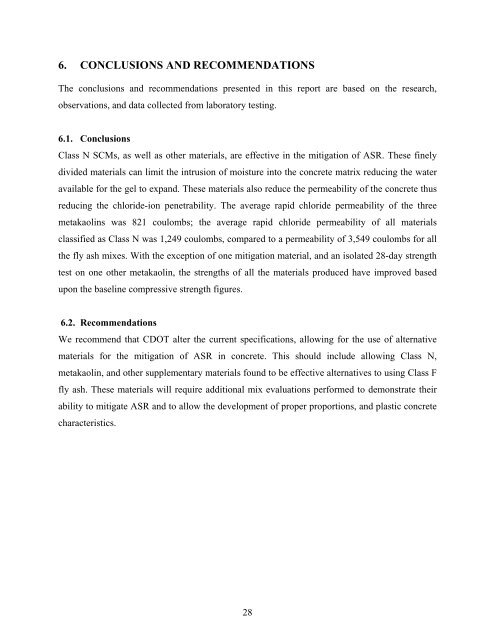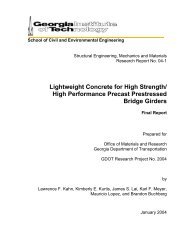Special-Uses-Alkali - Expanded Shale & Clay
Special-Uses-Alkali - Expanded Shale & Clay
Special-Uses-Alkali - Expanded Shale & Clay
You also want an ePaper? Increase the reach of your titles
YUMPU automatically turns print PDFs into web optimized ePapers that Google loves.
6. CONCLUSIONS AND RECOMMENDATIONSThe conclusions and recommendations presented in this report are based on the research,observations, and data collected from laboratory testing.6.1. ConclusionsClass N SCMs, as well as other materials, are effective in the mitigation of ASR. These finelydivided materials can limit the intrusion of moisture into the concrete matrix reducing the wateravailable for the gel to expand. These materials also reduce the permeability of the concrete thusreducing the chloride-ion penetrability. The average rapid chloride permeability of the threemetakaolins was 821 coulombs; the average rapid chloride permeability of all materialsclassified as Class N was 1,249 coulombs, compared to a permeability of 3,549 coulombs for allthe fly ash mixes. With the exception of one mitigation material, and an isolated 28-day strengthtest on one other metakaolin, the strengths of all the materials produced have improved basedupon the baseline compressive strength figures.6.2. RecommendationsWe recommend that CDOT alter the current specifications, allowing for the use of alternativematerials for the mitigation of ASR in concrete. This should include allowing Class N,metakaolin, and other supplementary materials found to be effective alternatives to using Class Ffly ash. These materials will require additional mix evaluations performed to demonstrate theirability to mitigate ASR and to allow the development of proper proportions, and plastic concretecharacteristics.28















